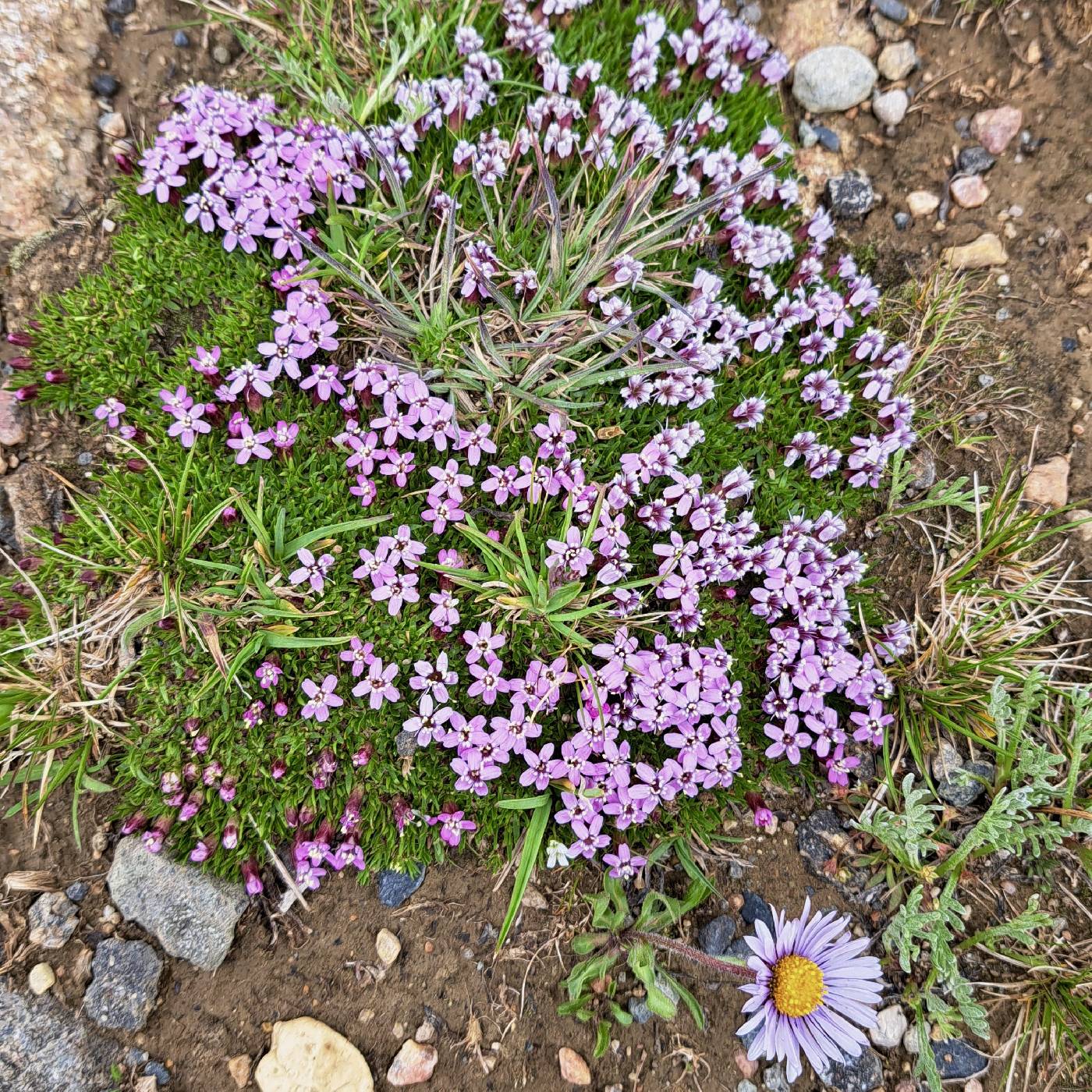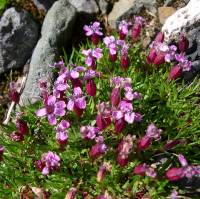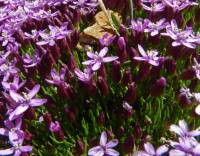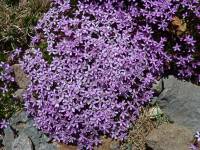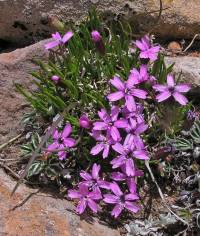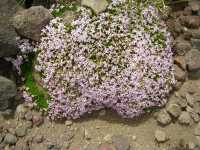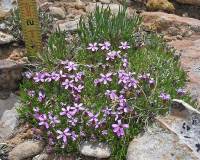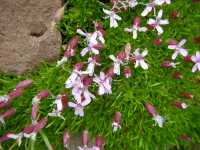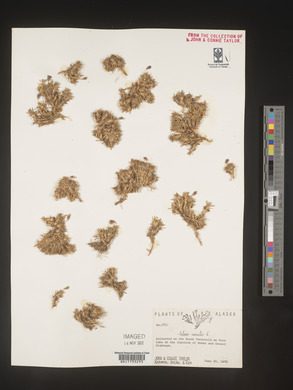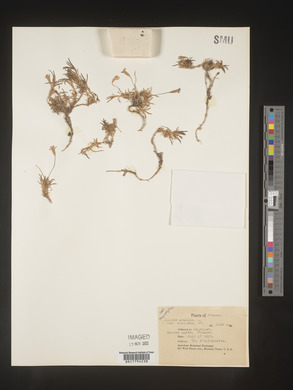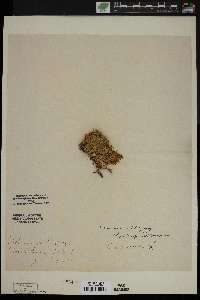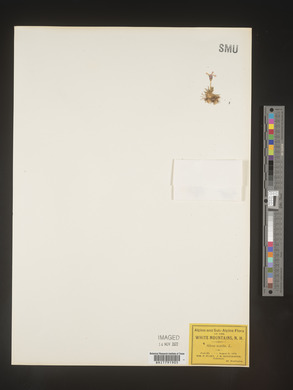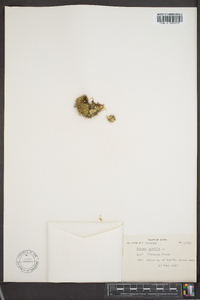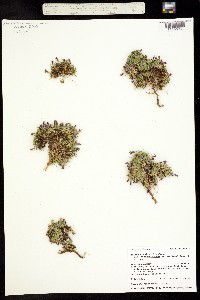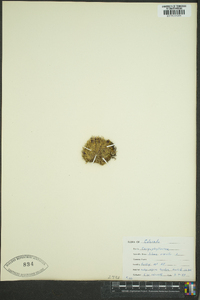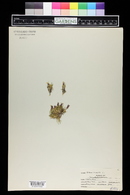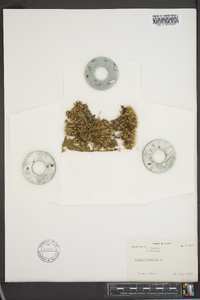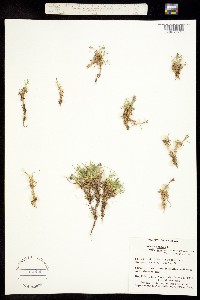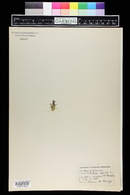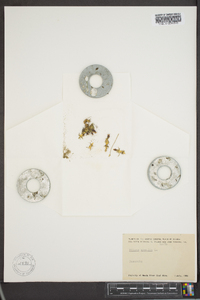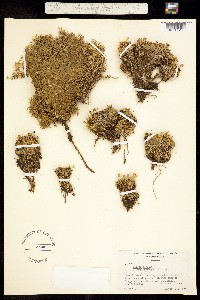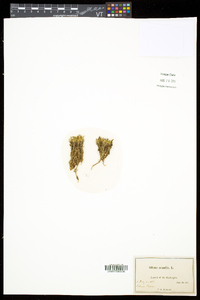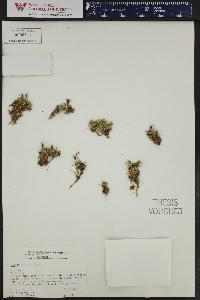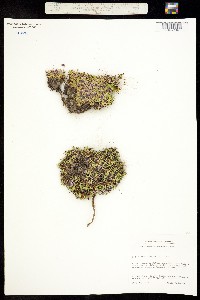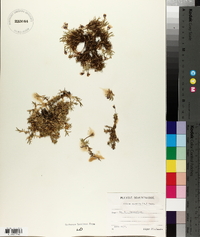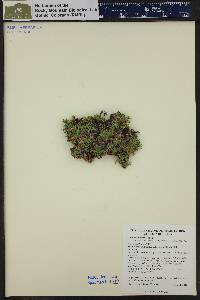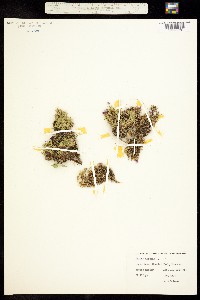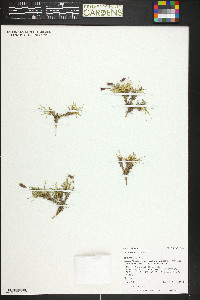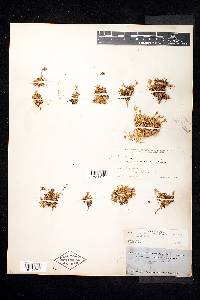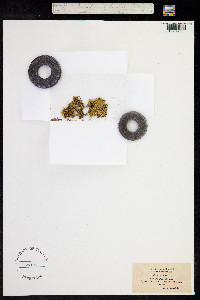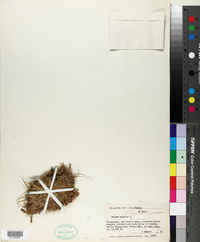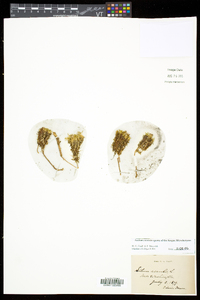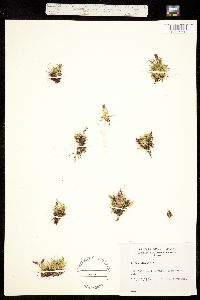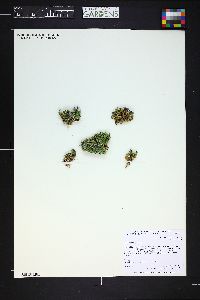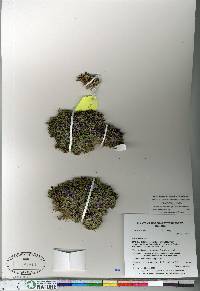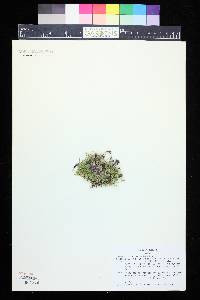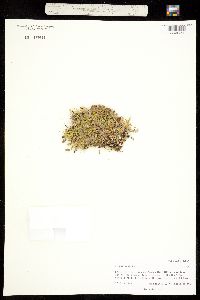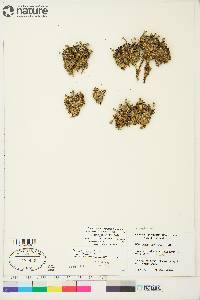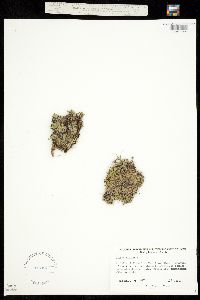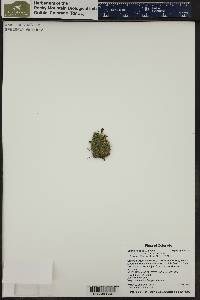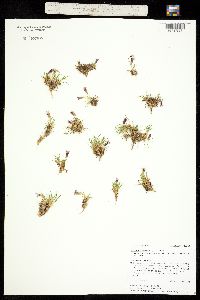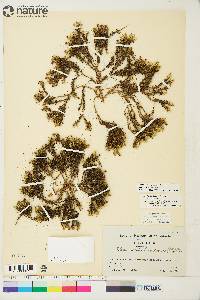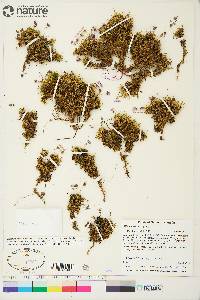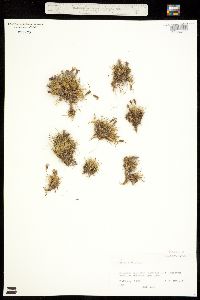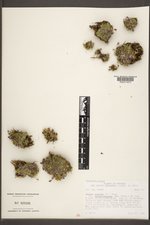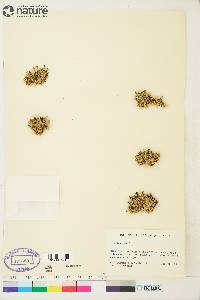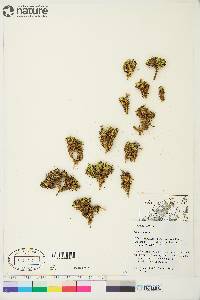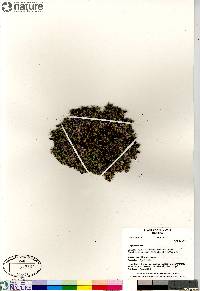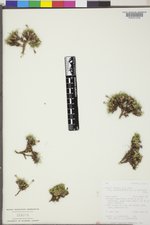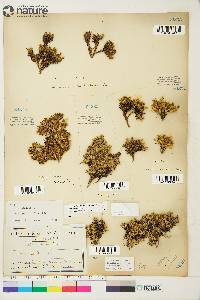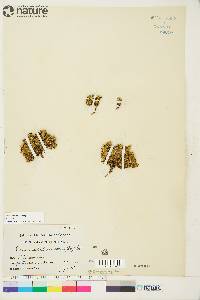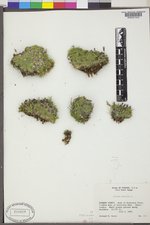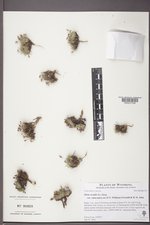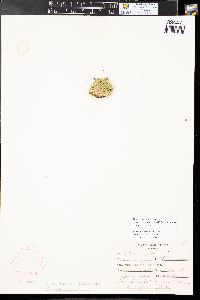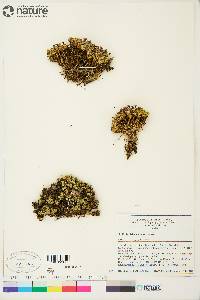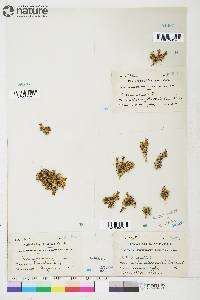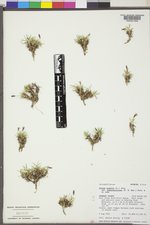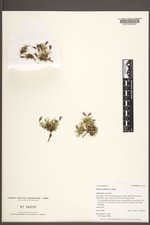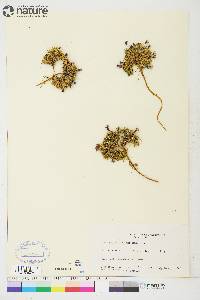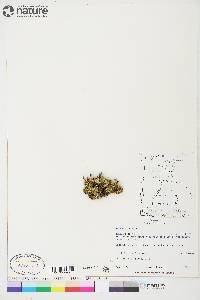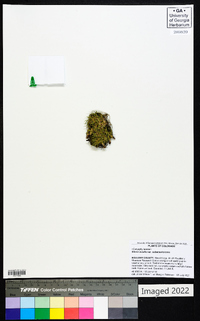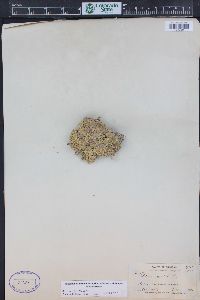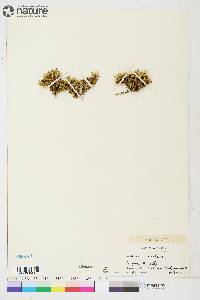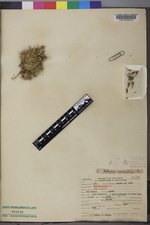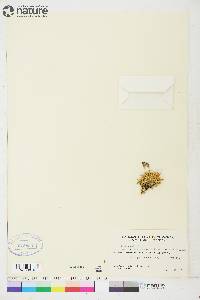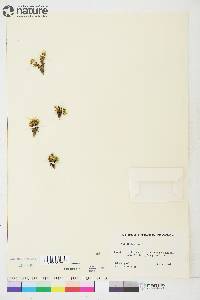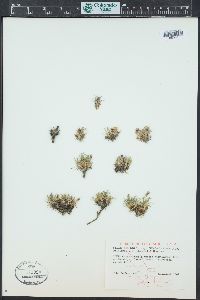
|
|
|
|
Family: Caryophyllaceae
Cushion-Pink, more...moss campion
|
Plants perennial, mat- or cushion-forming, subglabrous; taproot stout; caudex much-branched, becoming woody. Flowering stems erect, leafy proximally, 3-6(-15) cm, old leaves persistent at base. Leaves mostly basal, densely crowded and imbricate, sessile; blade 1(-3)-veined, linear-subulate to lanceolate, 0.4-1(-1.5) cm × 0.8-1.5(-2) mm, margins cartilaginous, often ciliolate especially proximally, apex acute, glabrous to scabrous. Inflorescences solitary flowers. Pedicels 2-40 mm. Flowers bisexual or unisexual, all plants having both staminate and pistillate flowers, others having only pistillate flowers, subsessile or borne singly on peduncle; calyx 10-veined, lateral veins absent, tubular to campanulate, (5-)7-10 mm, herbaceous, margins often purple tinged, dentate, sometimes ciliate, ± scarious, glabrous, lobes lanceolate to ovate, 1-2 mm; petals bright pink, rarely white, limb unlobed to shallowly 2-fid, 2.5-3.5 mm, base tapered into claw, auricles and appendages poorly developed; stamens exserted in staminate flowers, not so or aborted in pistillate flowers; styles 3. Capsules 3-locular, cylindric, equaling or to 2 times calyx, opening by 6 recurved teeth; carpophore ca. 1 mm. Seeds light brown, reniform, 0.8-1(-1.2) mm broad, dull, shallowly rugose. 2n = 24. Flowering early summer. Arctic and alpine tundra, gravelly, often wet places, rocky ledges; 0-4200 m; Greenland; Alta., B.C., Nfld. and Labr., N.W.T., N.S., Nunavut, Ont., Que., Sask., Yukon; Alaska, Ariz., Colo., Idaho, Maine, Mont., Nev., N.H., N.Mex., N.Y., Oreg., Utah, Wash., Wyo.; Europe; Asia (Russian Far East). Silene acaulis is a variable species, and most workers have recognized infraspecific taxa in North America: subsp. acaulis (subsp. exscapa and subsp. arctica), which is predominantly arctic; and subsp. subacaulescens, which extends down the Rocky Mountains from Alaska to Arizona and New Mexico. In subsp. acaulis, the leaves are flat and short and the flowers are subsessile and smaller in size. Subspecies subacaulescens is typically a larger, less-compact plant with longer, narrower leaves and larger, pedunculate flowers. However, in many populations, these two variants are poorly differentiated, and in others both occur together, connected by intermediates. Silene acaulis is widely distributed in arctic and alpine Europe.
General: Perennial, 3-6 (15) cm tall, plants cushion-like to mat- like, flowering stems erect, leafy towards the base; caudex branched, becoming woody; taproot stout. Leaves: Mostly basal (the old leaves persisting), opposite, simple, crowded and overlapping, linear to lance-linear, mostly 0.5-2 cm long, 0.8-1.5 mm wide, 1 (3)-veined, glabrous to scabrous, margins usually ciliate, apex acute; blades sessile. Flowers: Inflorescence a dense to open cyme; pedicels 1-5 mm long; calyx cylindric, 15-25 mm long, often cleft, greenish to reddish, mostly glabrous; petals pink or white, often drying dull purplish, clawed, the claw surpassing the calyx, the lobe obovate, 8-15 mm long, the apex irregularly toothed; flowers June-August. Fruits: Capsule, cylindric, 4-10 mm long, equal to or twice the length of the calyx, opening by 6 recurved teeth; seeds numerous, kidney-shaped, light brown, the surface shallowly wrinkled. Ecology: Alpine tundra, rocky ledges, gravelly soils, often wet habitats; 3500-3700 m (11500-12500 ft); Coconino County (San Francisco Peaks); Canada, northeastern and western to southwestern U.S. Notes: na Editor: Springer et al. 2008 Pulvinate-cespitose, taprooted perennial, 3-6 cm, glabrous except the scabrid or ciliolate margins of the lvs; lvs crowded, imbricate, 4-15 נ0.8-1.5 mm, lanceolate, sessile; fls subsessile, or solitary on peduncles 2-2.5 cm; plants dioecious, with the staminate fls shorter than the pistillate, or the fls sometimes perfect; cal 3.5-7 mm, glabrous; pet purple or lavender, seldom white, 8-12 mm, cuneate-oblong or oblanceolate with little distinction between claw and blade, entire to deeply 2-lobed, the auricles none, the appendages minute or none; fr 3-locular, barely exsert; 2n=24. Circumboreal, s. in e. N. Amer. to alpine summits of N.H. Our plants may be distinguished from the European typical phase on minor characters as var. exscapa (All.) DC. Gleason, Henry A. & Cronquist, Arthur J. 1991. Manual of vascular plants of northeastern United States and adjacent Canada. lxxv + 910 pp. ©The New York Botanical Garden. All rights reserved. Used by permission. |
|
|
|
This project was made possible in part by the Institute of Museum and Library Services [MG-70-19-0057-19].
Powered by Symbiota

